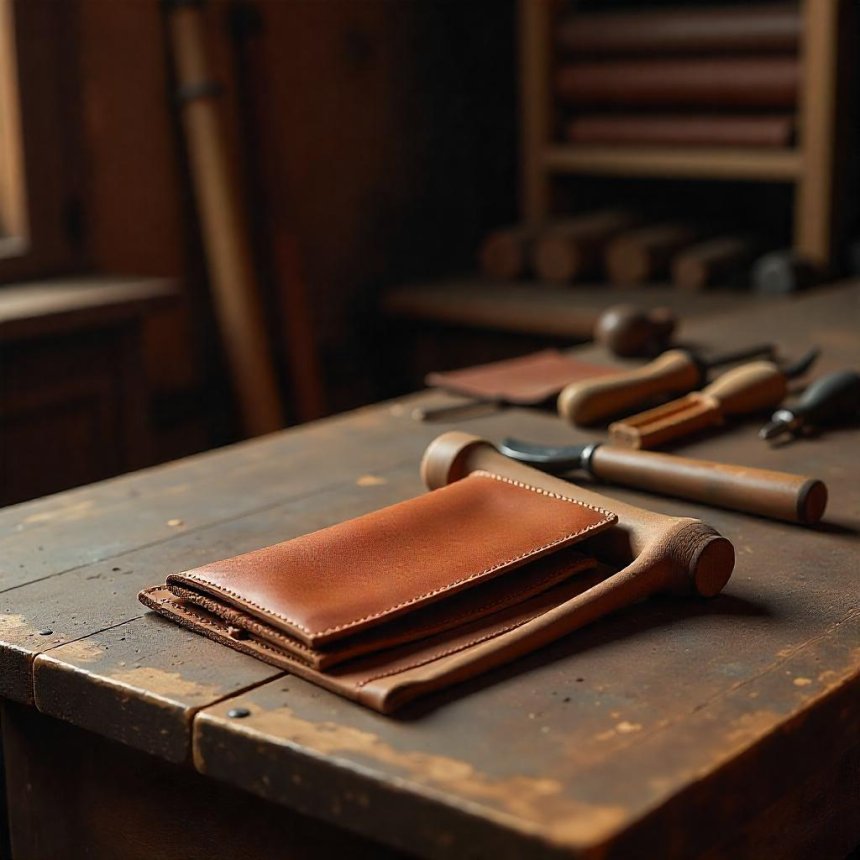Why Every Man Should Know Basic Leatherworking
Basic leatherworking skills for beginners, Why men should learn leather crafting, Essential leatherworking tools for starters, DIY leather projects for men, How to start leatherworking at home, Benefits of learning leather crafting, Simple leather repair techniques, Best beginner leatherworking kits, Handmade leather goods for self-reliance, Leatherworking as a masculine hobby

In an age dominated by mass-produced goods and disposable fashion, the art of leatherworking stands as a testament to durability, craftsmanship, and self-reliance. Leather is one of the oldest and most versatile materials known to man, used for everything from protective armor to luxury accessories. Yet, in today’s fast-paced world, few men take the time to learn even the basics of leather crafting—a skill that can save money, enhance creativity, and instill a deep sense of accomplishment.
Whether you’re looking to repair a worn-out wallet, craft a custom belt, or simply embrace a hands-on hobby, mastering basic leatherworking is an invaluable skill. Here’s why every man should know how to work with leather—and how to get started.
1. Self-Reliance: Fix and Customize Your Own Gear
How many times have you thrown away a perfectly good leather item just because a strap broke or a stitch came loose? Knowing basic leather repair means you can extend the life of your boots, jackets, bags, and belts instead of replacing them.
Common Repairs You Can Do Yourself:
- Replacing a belt buckle
- Restitching a torn wallet
- Patching up a leather bag strap
- Conditioning and restoring old leather
With just a few tools, you can salvage high-quality leather goods that would otherwise end up in a landfill.
2. Craft Unique, Personalized Accessories
Mass-produced leather goods lack character. When you learn leatherworking, you can create one-of-a-kind items tailored to your style and needs.
Beginner-Friendly Leather Projects:
- Handmade wallets & cardholders
- Custom keychains & watch straps
- Minimalist leather notebook covers
- Durable dog collars & leashes
Each piece you make carries your personal touch—something no store-bought item can replicate.
3. Develop a Profitable Side Hustle
High-quality leather goods are always in demand. What starts as a hobby can turn into a lucrative side business. Platforms like Etsy, Instagram, and local craft fairs provide excellent avenues to sell handmade leather products.
Best-Selling Leather Items for Beginners:
- Minimalist bifold wallets ($50-$100)
- Custom bracelets & watch bands ($30-$80)
- Personalized passport holders ($40-$70)
- Hand-stitched journals ($60-$120)
With practice, you can turn a passion into profit.
4. Strengthen Patience and Precision
Leatherworking is a meticulous craft that demands focus and patience. Cutting, stitching, and tooling leather require steady hands and attention to detail—skills that translate into other areas of life, from home repairs to professional work.
Key Skills You’ll Develop:
- Precision cutting & measuring
- Hand-stitching techniques (saddle stitch)
- Edge finishing & burnishing
- Tooling & embossing designs
5. Bonding Over a Timeless Craft
Leatherworking is a skill passed down through generations. Learning it connects you to a tradition of craftsmanship while providing opportunities to teach others.
Ways to Share the Skill:
- Host leatherworking workshops
- Gift handmade leather items
- Collaborate with other makers
- Document your journey online
Getting Started: Essential Leatherworking Tools
You don’t need a full workshop to begin. Here’s a basic toolkit for beginners:
Must-Have Leatherworking Tools:
1. Utility knife or rotary cutter – For precise cuts
2. Self-healing cutting mat – Protects surfaces
3. Edge beveler & burnisher – Smooths rough edges
4. Pricking irons & needles – For hand stitching
5. Mallet & hole punch – Creates clean holes
6. Leather conditioner & dye – For finishing touches
Start with vegetable-tanned leather (2-4 oz thickness), as it’s easiest to work with.
Final Thoughts: A Skill Worth Mastering
Leatherworking is more than just a hobby—it’s a practical, rewarding, and timeless skill that every man should know. Whether you’re repairing gear, crafting custom accessories, or building a side business, the ability to work with leather empowers you to create, fix, and preserve with your own hands.
So, grab some leather, a few basic tools, and start crafting. The satisfaction of making something durable and beautiful is unmatched.
Share
What's Your Reaction?
 Like
0
Like
0
 Dislike
0
Dislike
0
 Love
0
Love
0
 Funny
0
Funny
0
 Angry
0
Angry
0
 Sad
0
Sad
0
 Wow
0
Wow
0
















